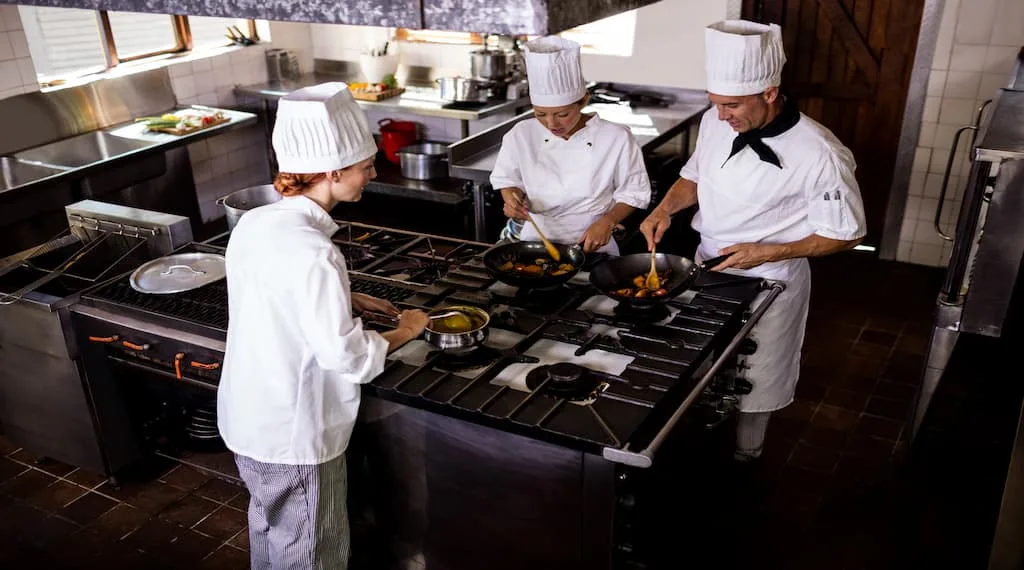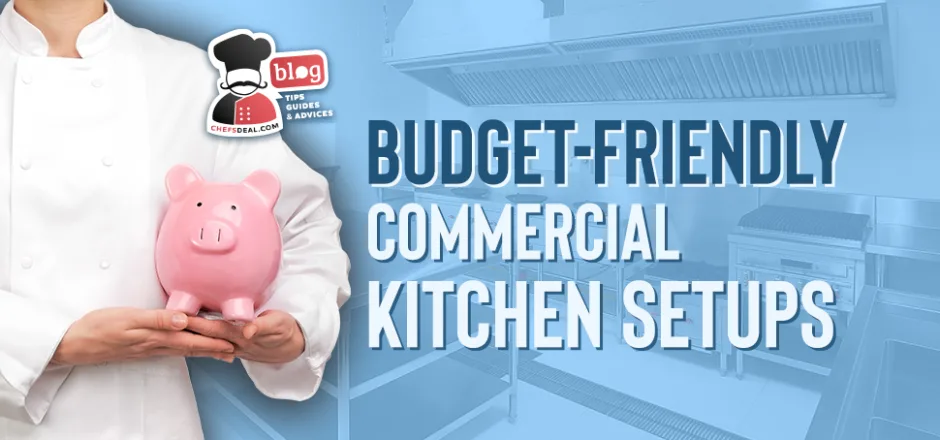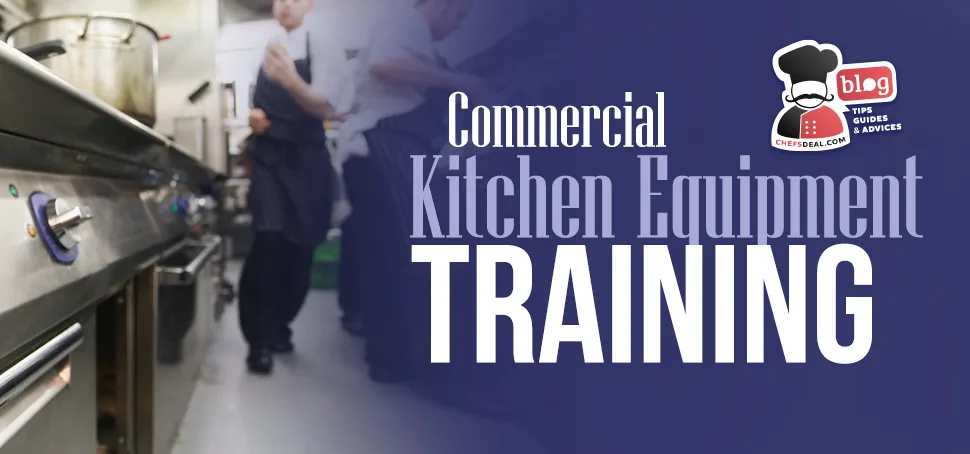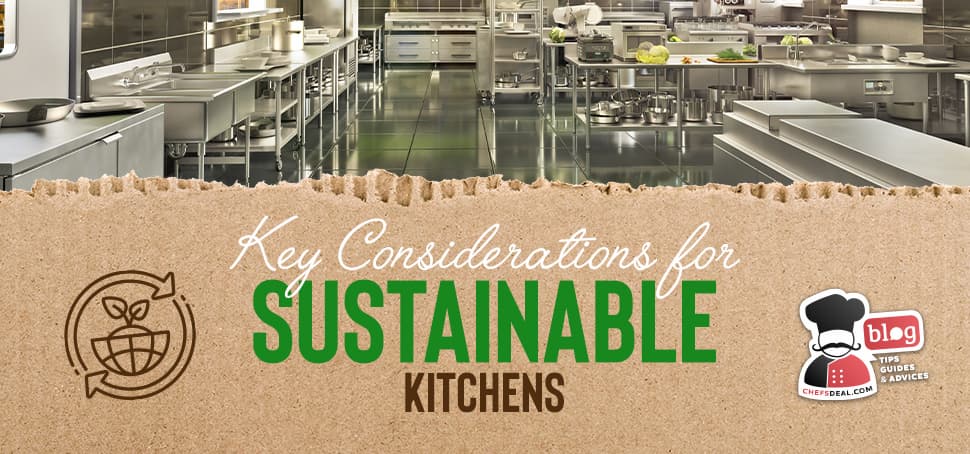Establishing a proper and efficient commercial kitchen setup is one of the biggest challenges when starting a new business or renewing a commercial kitchen. Starting a new business comes with challenges and requires a reasonable budget, as in small businesses looking forward to expanding. Research the market and current trends and planning every single detail, from the location of your business to financial and supplier options, should be the first step before setting up a commercial kitchen. With a solid plan, including the layout, budget, necessary equipment and storage ideas, and budget-friendly tips, you can tackle the challenges of a commercial kitchen setup.
1. Understand Your Needs
Before starting to set up a commercial kitchen, you need to know what you have and what you need. A commercial kitchen setup should allocate space for equipment, storage, and working while allowing chefs to function freely to serve the right menu. Starting with designing a menu will help to determine the equipment and storage needs of your kitchen.
Assess the Menu
A small kitchen means limited space for storage and equipment, which determines the extent of your menu content. Considering your business type, current market trends, local preferences, and competition in your area, you can offer an attractive and satisfactory menu. The designed menu will determine the essential equipment your kitchen requires.
Size of the Operation
The size of the kitchen and the menu you designed will determine the size and types of equipment you need. Calculating your free space and deciding on essential equipment depending on the menu will avoid overspending on the oversized equipment you don’t need. Cooking, refrigeration, storage, prep, and washing equipment are the essentials of any commercial kitchen. Considering your menu offerings, available room for the equipment, and power source available in your area, you can choose from gas or electric ovens, ranges, countertop, undercounter or full-size refrigerators and dishwashers, and prep tables.

2. Prioritize Essential Equipment
Equipment is the biggest part of a commercial kitchen setup. The available space in the kitchen, menu offerings, your target market, and local sources will determine the type and size of the equipment you need.
Multi-Functional Appliances

For startups and small businesses, compact-sized multi-functional equipment will be more efficient and budget-friendly in commercial kitchen setups. Multi-purpose equipment can perform numerous tasks in one unit, saving space and money. Cook-and-hold ovens, prep tables with refrigerators, and food processors are multi-functional equipment that could be profitable investments for compact kitchens and startups.
New vs. Used Equipment
When purchasing equipment for commercial kitchen setup, budget is the decisive point in opting for new or used equipment. Used equipment is a more budget-friendly option initially for starting a business or small operations. However, since used equipment is out of warranty, they may have additional maintenance costs in the long term. Also, the lifespan of new equipment will most probably endure longer than used equipment, which should be considered when making a financially right decision. Buying essential equipment that is used every day new instead of second-hand will ensure consistency and food quality. Buying equipment that is frequently used second-hand is a more budget-friendly option.
You can read our article “Used vs. New Commercial Kitchen Equipment: Which One to Choose?” to make the best decision about used and new equipment.
3. Optimize Your Space
Space limitations make small kitchens difficult to set up and operate efficiently. However, smart commercial kitchen setup and layout strategies greatly help maximize the kitchen’s efficiency.
What Kitchen Layouts are The Most Efficient for Small Kitchens?
Layout is one of the crucial parts of establishing a commercial kitchen setup to maximize space. A commercial kitchen needs delivery, storage, preparation, cooking, service, and cleaning areas divided to provide a seamless workflow and facilitate operation. Commercial kitchens have 6 main layout designs to maximize efficiency and service speed.
- Single-Wall Layout: Ideal for very narrow kitchens, this layout places all kitchen components (cabinets, appliances, and counters) along a single wall. It’s efficient and saves space, making it a go-to choice for studio or loft spaces.
- Galley or Corridor Layout: This layout features two parallel walls or runs of cabinets facing each other, creating a small passage or galley between them. It’s highly efficient for cooking, as everything is within easy reach.
- L-Shaped Layout: The L-shaped layout utilizes two adjoining walls forming an L. This layout is great for small to medium-sized kitchens and allows for a more open design, minimizing the cramped feeling.
- U-Shaped Layout: Suitable for small kitchens with more floor space, the U-shape offers counter space and cabinets along three walls. This layout maximizes storage and workspace, though it may limit movement in tight spaces.
- Island Layout: If space allows, a small island can be a great addition to an L-shaped or single-wall kitchen. It provides extra counter space and can serve as an informal dining area. A mobile island or cart is a flexible alternative in very small kitchens.
- Peninsula or G-Shaped Layout: This is a variation of the U-shaped layout, with an additional partial wall or counter extending from one wall. It offers more storage and workspace while creating a natural barrier between the kitchen and living areas.
You can find more information about kitchen layouts in our blog “How To Choose The Right Commercial Kitchen Equipment Layout” to maximize your kitchen space.

Vertical Storage Solutions
Overhead walls are great for use as an extra storage space. Using vertical space by building shelves to store frequently used items and tools saves floor space and provides extra storage areas for small kitchens. Empty walls and spaces above existing bins are ideal for extra storage, freeing counter space and providing seamless operation.
4. Benefit from Financing and Leasing Options for Commercial Kitchen Setups
Acquiring essential quality equipment often requires significant financial resources. Fortunately, a range of financing and leasing options cater specifically to the needs of business owners seeking to equip their kitchens with top-notch gear without straining their budgets. By carefully evaluating your financial situation, business goals, and equipment requirements, you can make an informed decision that aligns with your specific needs and aspirations.
Financing Options
Some of the financing options that restaurateurs prefer the most are:
- A “brick and mortar” bank term loan
- Alternative loan
- A small business organization loan, which is known as an SBA loan
- A merchant cash advance
- A company credit line
- Friends and family funds or equity
- Equipment Finance
- Crowdfunding
Equipment Leasing
When establishing a commercial kitchen setup, leasing equipment instead of buying is a more budget-friendly option. Leasing means renting equipment, which is a type of restaurant financing. You can lease various equipment, from kitchen equipment to safety and other technological items such as computers. As a small business owner or a startup, leasing can be more efficient, maybe until there is a steady profit flow.
Seeking Business Loans
The typical small business loan in America is around $630,000, with an interest rate ranging between 2.5% and 7%, which can change greatly with different repayment plans. There are various loan options for startups and small businesses to get financial support. SBA, meaning small business administration, is a government agency that gives loans of funds to support startups and small businesses. It is demanding that applicants put down a business and personal collateral to prove their personal investment in the operation to support the loan. There are various options, such as a traditional commercial loan, given directly from a bank with lower interest rates (6-8%), and a business credit line, which works like a credit card.
6. Negotiate with Suppliers
Managing expenses is critical to achieve profitability in a competitive restaurant sector. Negotiating with suppliers is one of the points that affects the running expenses. Establishing good communication with suppliers may lead to better terms and discounts, resulting in increased profit and financial constancy.
Bulk Purchases
Most suppliers offer special discounts when buying in bulk. Some vendors offer lower prices if you choose night delivery time instead of peak hours. These benefits of negotiating with suppliers can save you money and increase the profit margins.
Building Relationships
Negotiation is not only about prices but also about trust and good relationships. Being respectful, honest, and clear with your requirements will establish a good relationship with your vendor, leading to trustful communication and special offers for you.
7. Embrace Technology
The developing technology has provided many budget-friendly solutions, such as reducing energy usage and food waste using energy-efficient appliances and specific programs and software. When building a commercial kitchen setup, budget-friendly options will support the growth of small businesses.
Energy-Efficient Appliances
Energy costs are one of the main expenses of a commercial kitchen with various commercial-grade equipment working continually. Energy-efficient appliances greatly reduce energy and electric expenditures and save money in the long run. This is a budget-friendly option for small kitchens and startups when establishing a commercial kitchen setup.
Inventory Management Software
Inventory management is a tracking method that keeps track of the current inventory, showing what is used in what amount and what is thrown away. Inventory management software is a program that connects to the restaurant’s POS, keeps real-time track of the goods and analytics indicating the waste, and works to prevent it. An inventory management system helps to make better orders, prevent food wastage, and save money.
8. DIY and Upcycling
DIY and upcycling are both budget- and environment-friendly activities. Using old tools and equipment to make new creative and useful items is a great way of preventing wastage and regaining the inoperative and worthless tools and equipment. Here are some examples of repurposing old useless tools and equipment:
Upcycling Old Equipment
- Spoons and flatware can be turned into hooks and used everywhere in a kitchen to hang pots, pans, or other ware, serving as a hanger and saving counter space.
- Worn-out pots are not going to be trashed anymore. Turn them into wine buckets, buffet risers, or beverage tubs with a touch of spray paint.
- Use an s hook attachment to hang any cup with a handle to the wall, serving as a utensil holder or organizer.
Conclusion
Launching a commercial kitchen setup for startups and small businesses requires a budget-friendly approach to expand and ensure profitable income. Prioritizing essential equipment, optimizing space, and seeking financial loan support will ease initial costs while negotiating with suppliers and embracing technology will enhance operational efficiency. Entrepreneurs are urged to stay innovative, reassess needs, and embrace cost-effective solutions to establish a foundation for success in their commercial kitchen setup.





